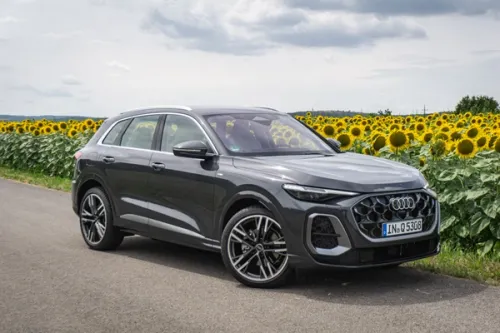Volvo Group Working On Advancing Electric Drivetrains
Imagine a future where trucks and buses are continuously supplied with electric power without carrying large batteries. Instead, power lines are built into the surface of the road. This could be a future solution for long-distance trucks and buses running on electricity. Volvo Group already has extensive knowledge about electric drive trains, but in order to become world leading in sustainable transport solutions, the Volvo Group must find even more solutions that allow the vehicles to operate on renewable energy. A great deal of this energy will be distributed as electricity, but the challenge is all about supplying the vehicle with electricity power when needed.


The Volvo Group participates in a large Swedish research project to find solutions for this, with the support of the Swedish Energy Agency. The project includes the Swedish Transport Administration, Vattenfall, several universities, vehicle manufacturers and suppliers.
Last year, Volvo built a 400-metre long track at its testing facility in Hällered outside Gothenburg and the company has been testing the system since last year.
The method currently being developed and tested by the Volvo Group, together with Alstom, entails two power lines built into the surface of the road along the entire length of the road. A current collector in contact with the power lines will be located on the truck.
The two power rails/lines run along the road's entire length. One is a positive pole, and the other is used to return the current. The lines are sectioned so that live current is only delivered to a collector mounted at the rear of, or under, the truck if an appropriate signal is detected. As an additional safety measure, the current flows only when the vehicle is moving at speeds greater than 60 km/h (37 mph).
The truck being used as a test bed for the project is a standard Volvo FH12 tractor sporting a diesel engine. There's no electric motor installed at the moment. When the collector comes into contact with the power lines, 750 V of direct current is delivered and routed to a water-cooled heating element that has a similar power requirement to an electrically-driven truck. The collector has been designed to track the power rails, even when the vehicle is not directly over the middle of the contact lines.
However, a great deal of research still remains before this can become a reality. It involves the continued technical development of the current collector, electric motor and the control systems required. It also involves road construction, road maintenance, electricity supply along the roads and various payment models, etc.
Credits: Oneshift News Team


Get the Best Price for your used car
from 500+ dealers in 24 hours

- Convenient and Hassle-Free
- Consumer Protection
Transparent Process
With No Obligation








